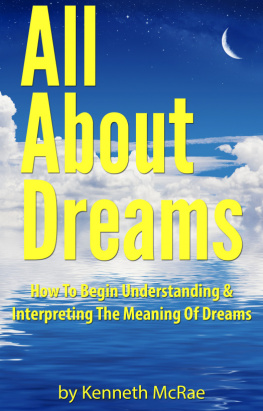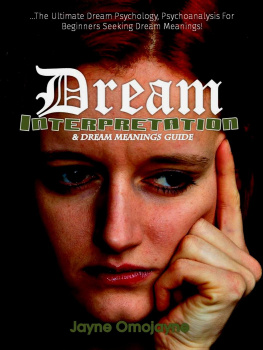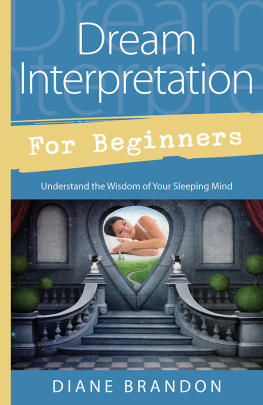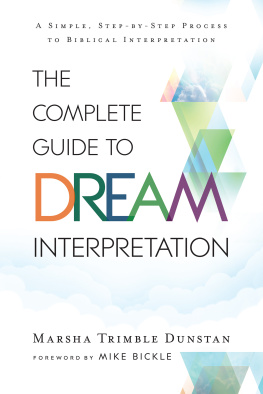Artemidorus of Daldis in western Asia Minor (late second century early third century ad ; exact dates unknown) was a professional dream-interpreter who wrote a comprehensive theoretical and practical guide to the interpretation of dreams, the Oneirocritica, in five Books composed at intervals, probably between c. ad 180 and 210. Dream-books and treatises on interpretation had a long history from at least the fifth century bc , and Artemidorus was well versed in the tradition, but his Oneirocritica has unique importance and interest as the only such book to have survived complete from Graeco-Roman antiquity, and its direct or indirect influence in the succeeding centuries, up to and including Freud, has been immense. Insisting on direct experience rather than textbook learning, Artemidorus travelled widely through Asia Minor, the Aegean islands, Greece, and Italy to collect his material. Although evidently a member of the civic elite in both Daldis and the provincial capital Ephesus, his main interest, and we presume his main professional practice, concerned the dreams, and the hopes or anxieties, of ordinary people lower down the social order. Books 4 and 5 of the Oneirocritica are addressed to his son, who was making his way as a trainee dream-interpreter. They form a sort of beginners manual, with a review of the classification of dreams and the general principles of interpretation, a wealth of indicative practical examples, and advice on some of the tricks of the trade.
Martin Hammond was born in 1944 and educated at Winchester College and Balliol College, Oxford. He has taught at St Pauls School, Harrow School, and Eton College, where he was Head of Classics from 1974 to 1980, and Master in College from 1980 to 1984. He was Headmaster of the City of London School from 1984 to 1990, and of Tonbridge School from 1990 to his retirement in 2005. He has translated the Iliad (Penguin, 1987), the Odyssey (Duckworth, 2000; Bloomsbury, 2014), the Meditations of Marcus Aurelius (Penguin, 2006), and for Oxford Worlds Classics Thucydides: The Peloponnesian War (2009), Arrian: Alexander the Great: The Anabasis and the Indica (2013), and Josephus: The Jewish War (2017).
Peter Thonemann was born in 1978 and educated at Mill Hill School and Lady Margaret Hall, Oxford. Since 2007 he has been Forrest-Derow Fellow and Tutor in Ancient History at Wadham College, Oxford. His books include The Birth of Classical Europe (with Simon Price, 2010), The Maeander Valley (2011), The Hellenistic World: Using Coins as Sources (2015), and The Hellenistic Age: A Very Short Introduction (2018). He writes regularly on all aspects of Greek and Roman antiquity for the Times Literary Supplement and the Wall Street Journal.
oxford worlds classics
For over 100 years Oxford Worlds Classics have brought readers closer to the worlds great literature. Now with over 700 titlesfrom the 4,000-year-old myths of Mesopotamia to the twentieth centurys greatest novelsthe series makes available lesser-known as well as celebrated writing.
The pocket-sized hardbacks of the early years contained introductions by Virginia Woolf, T. S. Eliot, Graham Greene, and other literary figures which enriched the experience of reading. Today the series is recognized for its fine scholarship and reliability in texts that span world literature, drama and poetry, religion, philosophy and politics. Each edition includes perceptive commentary and essential background information to meet the changing needs of readers.

Great Clarendon Street, Oxford, ox2 6dp, United Kingdom
Oxford University Press is a department of the University of Oxford. It furthers the Universitys objective of excellence in research, scholarship, and education by publishing worldwide. Oxford is a registered trade mark of Oxford University Press in the UK and in certain other countries
Translation, Notes on the Greek Text, Index Martin Hammond 2020 Introduction, Appendix, Explanatory Notes Peter Thonemann 2020
The moral rights of the authors have been asserted
First published as an Oxford Worlds Classics paperback 2020
Impression: 1
All rights reserved. No part of this publication may be reproduced, stored in a retrieval system, or transmitted, in any form or by any means, without the prior permission in writing of Oxford University Press, or as expressly permitted by law, by licence or under terms agreed with the appropriate reprographics rights organization. Enquiries concerning reproduction outside the scope of the above should be sent to the Rights Department, Oxford University Press, at the address above
You must not circulate this work in any other form and you must impose this same condition on any acquirer
Published in the United States of America by Oxford University Press
198 Madison Avenue, New York, NY 10016, United States of America
British Library Cataloguing in Publication Data
Data available
Library of Congress Control Number: 2019951469
ISBN 9780198797951
ebook ISBN 9780192518873
Printed and bound in Great Britain byClays Ltd, Elcograf S.p.A.
Preface
Artemidorus (late second centuryearly third century ad, exact dates unknown), a native of the small town of Daldis in western Asia Minor, but resident in the provincial capital Ephesus, was the author of the only dream-book which has been preserved from classical antiquity. His Oneirocritica (The Interpretation of Dreams) is a treatise and manual on dreams, their classification within the broad categories of significant and non-significant, and the various analytical tools which should be applied to their interpretation. His approach is professional: he studied most of the earlier examples of this popular genre, which goes back to at least the late fifth century bc , and travelled widely through Asia Minor, the Aegean islands, Greece, and Italy to collect peoples dreams and record their outcomes, in the process casting invaluable light on religious beliefs and social mores in the early Roman Empire. His many examples, often quite alien to what we know of modern dream-experience and dream-content, illustrate that such experience and content, and probably dream-symbolism also, is to a large extent culturally determined. The ancients had their anxiety dreams and wish-fulfilment dreams like all of us, but it is clear, not only from Artemidorus, that the nature, structure, and content of their dreams were often quite different from ours. So was the significance attributed to dreams and sought by means of professional help. In the post-Freudian age we once again see dreams as potentially significant, but now as revelations of the psyche rather than the future. For the ancients, and Artemidorus, their presumed significance was predictive, and sometimes prescriptive: dreams are a form of divination or prophecy, they are generated by the mind (1.2.3, 4.59.3), and the mind itself is by nature prophetic (4.2.12, 4.27.1).
Some of the interpretative tools employed by Artemidorus seem far-fetched to us (but not necessarily to his clients), for example numerology, and much of his reliance on puns and wordplay, but alongside this bizarre stuff are some surprisingly modern elements of analysis. Artemidorus recognizes that many dreams are simply the recycling of the days residue, or the result of pre-existing physiological or emotional states; he insists that a dream offered for interpretation should be as completely recollected as possible, since apparently minor details can have major significance; and he emphasizes the need for the dream-interpreter to have full information about the dreamers background, status, and present circumstances, including his or her medical and psychological condition.








